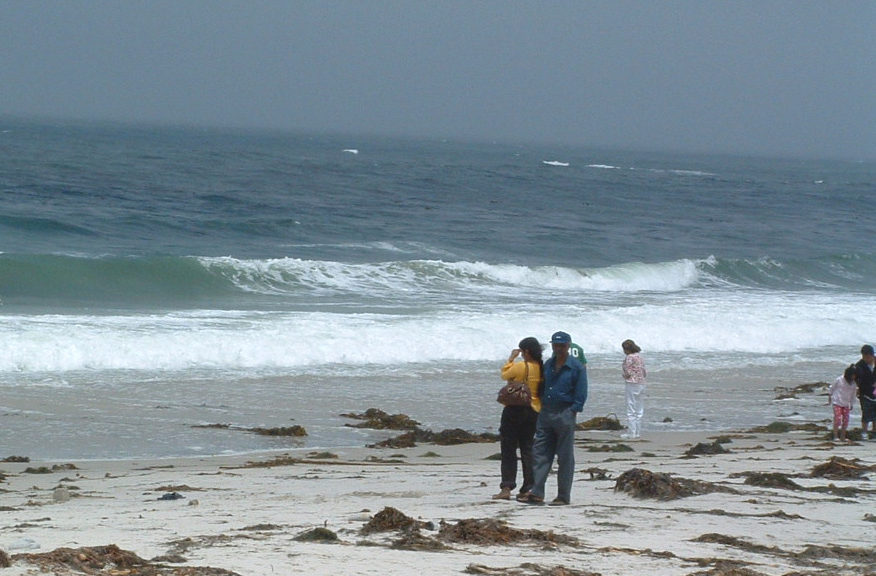
San Francisco Day Trip: Along the Pacific Coast
When we visited San Francisco in 2008, we booked a tour that took us down the Pacific coast with stops in Monterey, Pebble Beach and Carmel. We began by traveling south on Pacific Coast Highway 1. The pictures in this section are some I took of views along the highway.


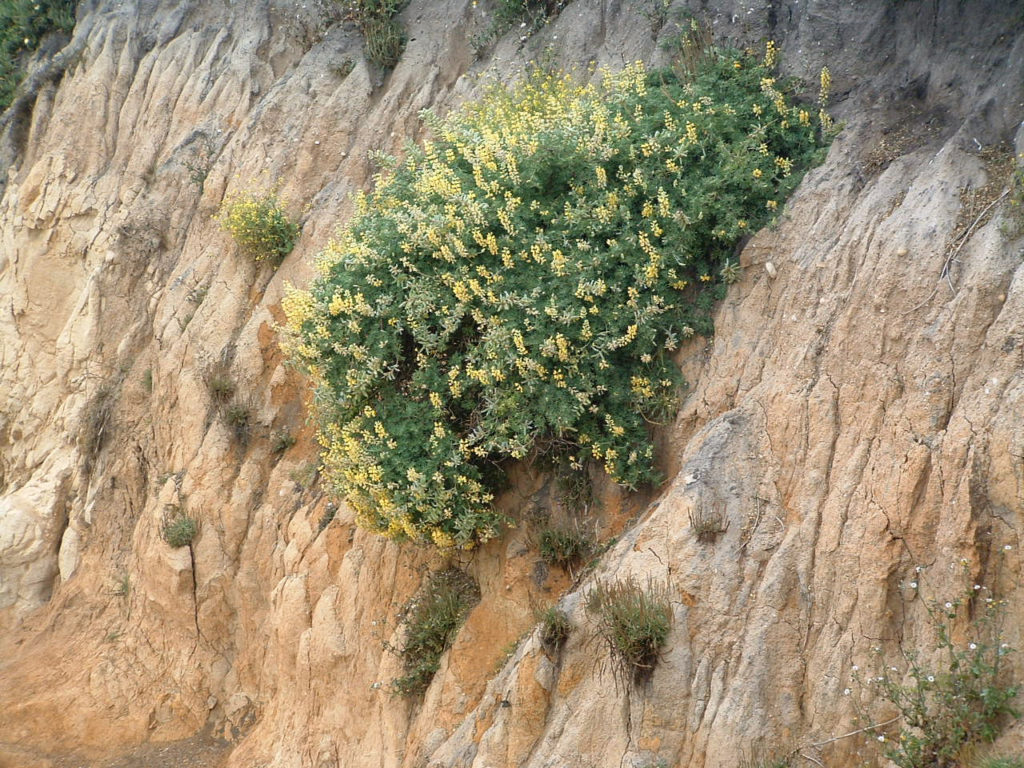
We stopped in Monterey for lunch and had a little time to explore the town. Monterey was once home to a sardine-canning industry. Unfortunately it was over-fished and most of the canneries went out of business. Several of the old cannery buildings have been renovated and are home to restaurants, shops and art galleries (collectively known as Cannery Row). Marine life is now protected and the aquatic population is thriving. Monterey is also home of the Monterey Bay Aquarium. After our lunch, we walked around the town and also took in views of the shoreline and of course the sea lions.
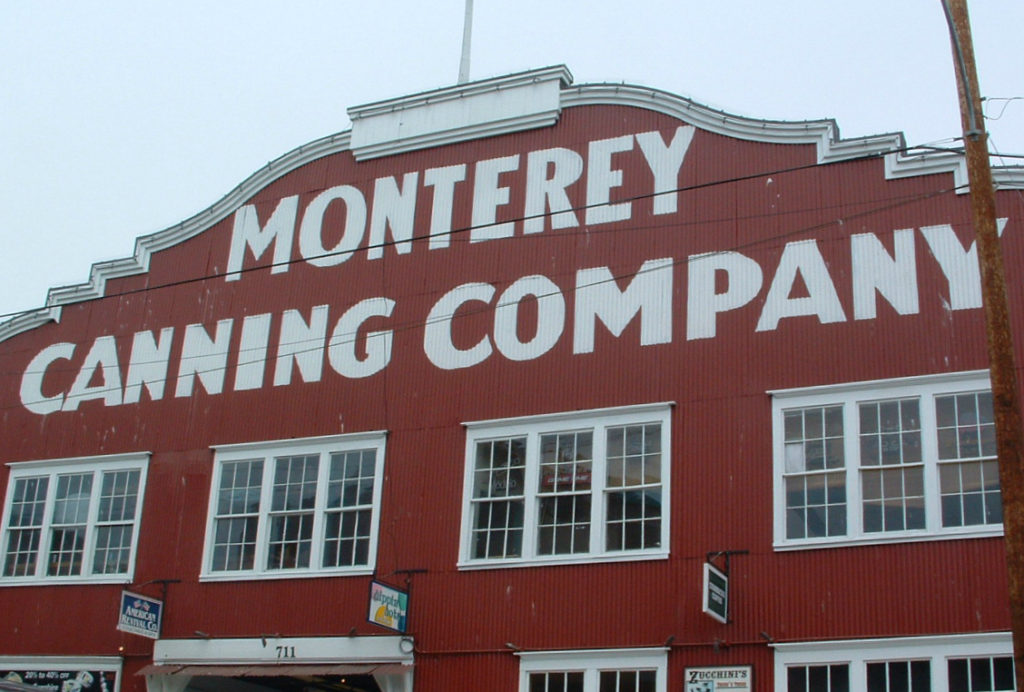
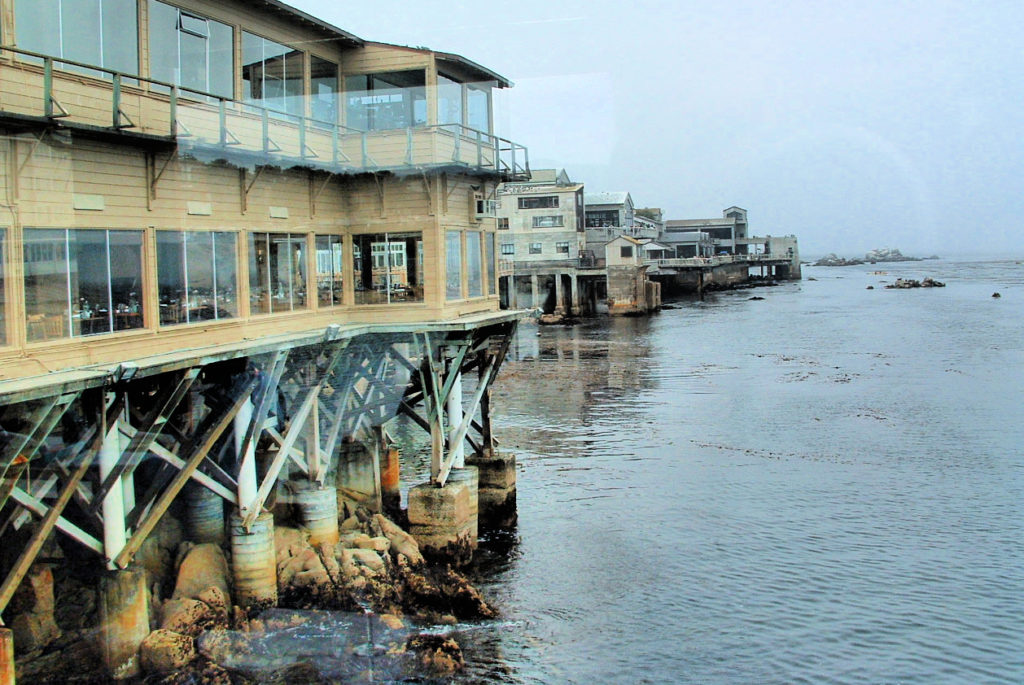

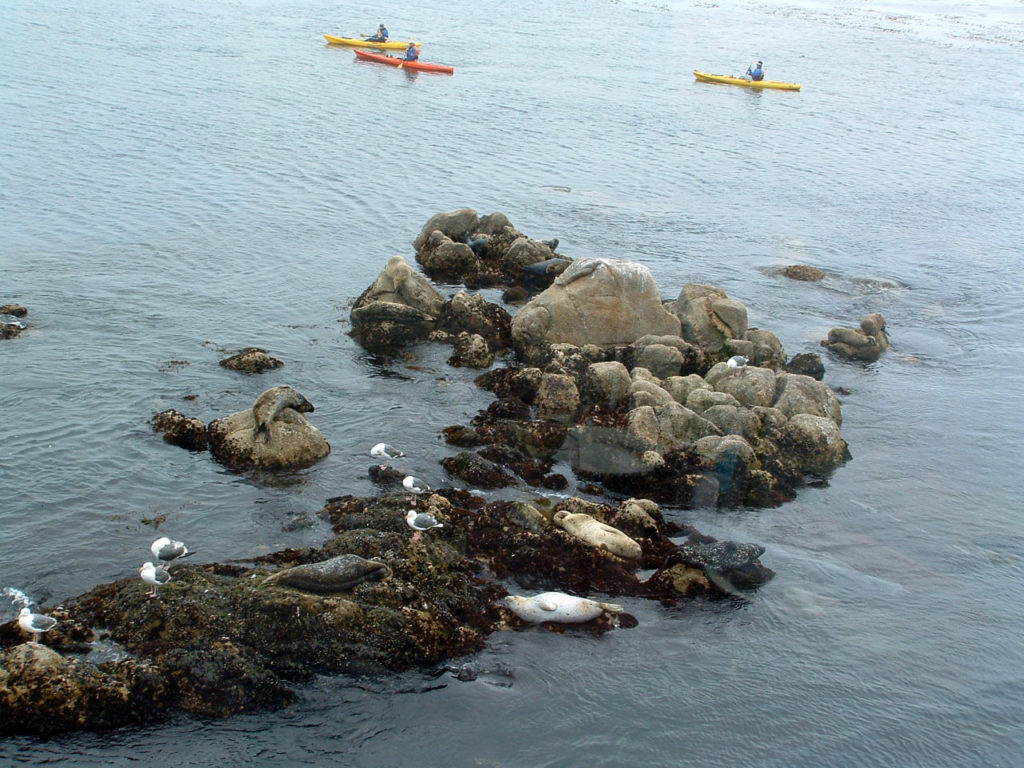

After our stop in Monterey, our tour continued on the 17-Mile Drive, a private road where fees are charged for use of the roadway (bicyclists and walkers are free). Our first stop was Spanish Bay. It is pictured above the blog title and had a beautiful sandy shoreline. We next came to an area called “The Restless Sea.” Here the power of the sea and wind is evident as you look at the ocean waves and the erosion of rocks. The last two pictures in this section are of more sea lions and also Bird Rock, obviously named for the hundreds of birds that flock to it. The most common birds here are Brandt’s cormorants and pelicans.
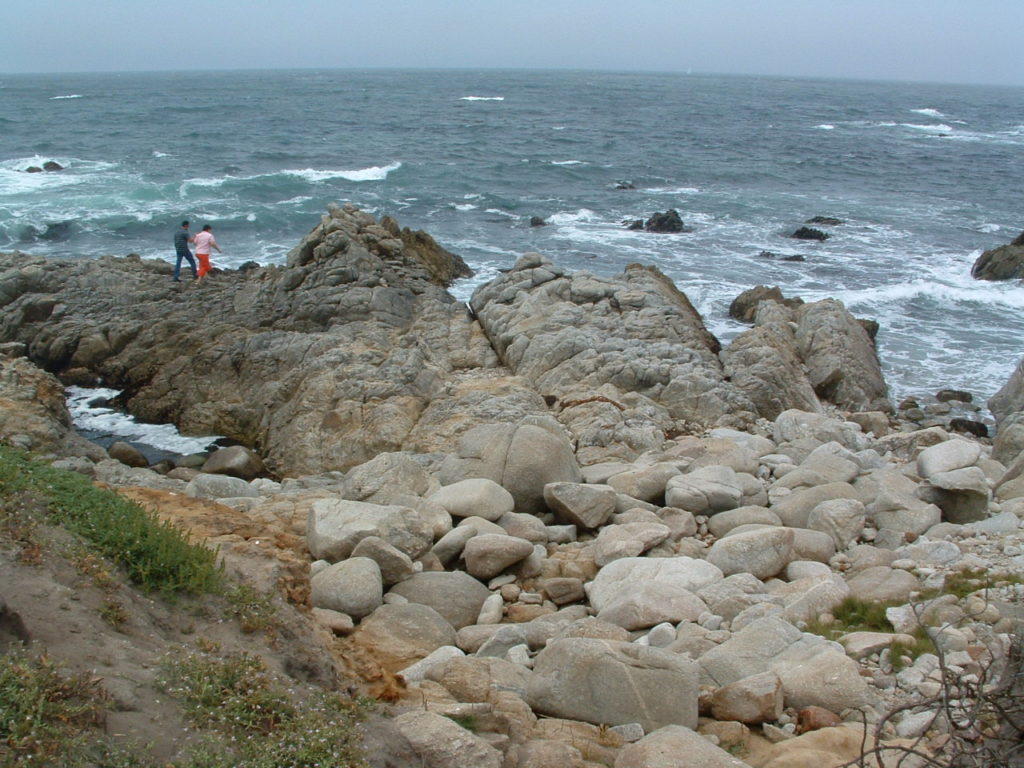

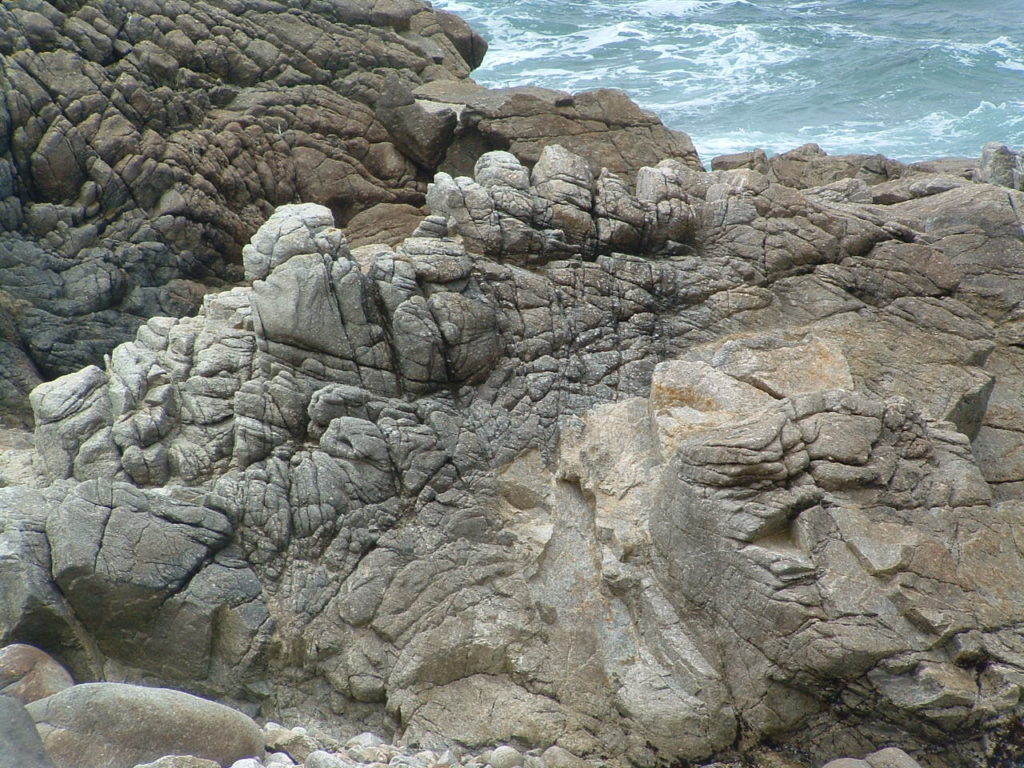
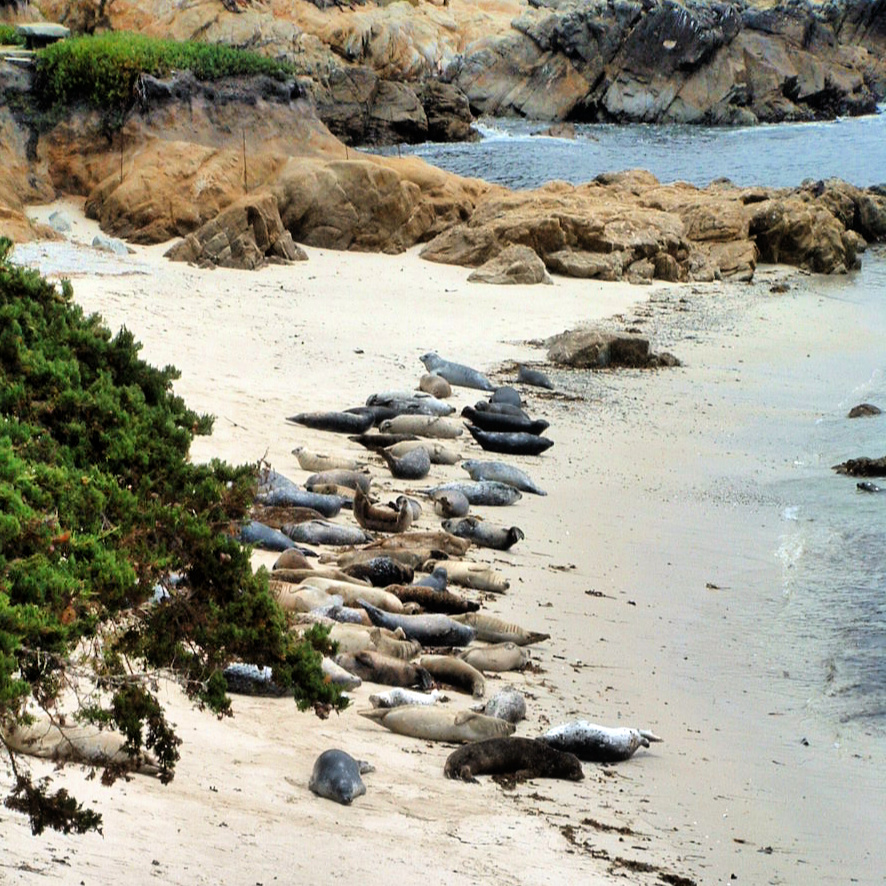

As we continued on the 17 Mile Drive, we stopped for a picture of “The Lone Cypress,” a symbol of Pebble Beach. It is over 250 years old. We drove a little farther and then came to the Lodge at Pebble Beach, at the Pebble Beach Golf Links. I took a picture of the Rolex Clock at the Lodge. The Lodge was built in the early 1900s and we shopped for some golf memorabilia while we were there. We were also able to take pictures of the 18th fairway.

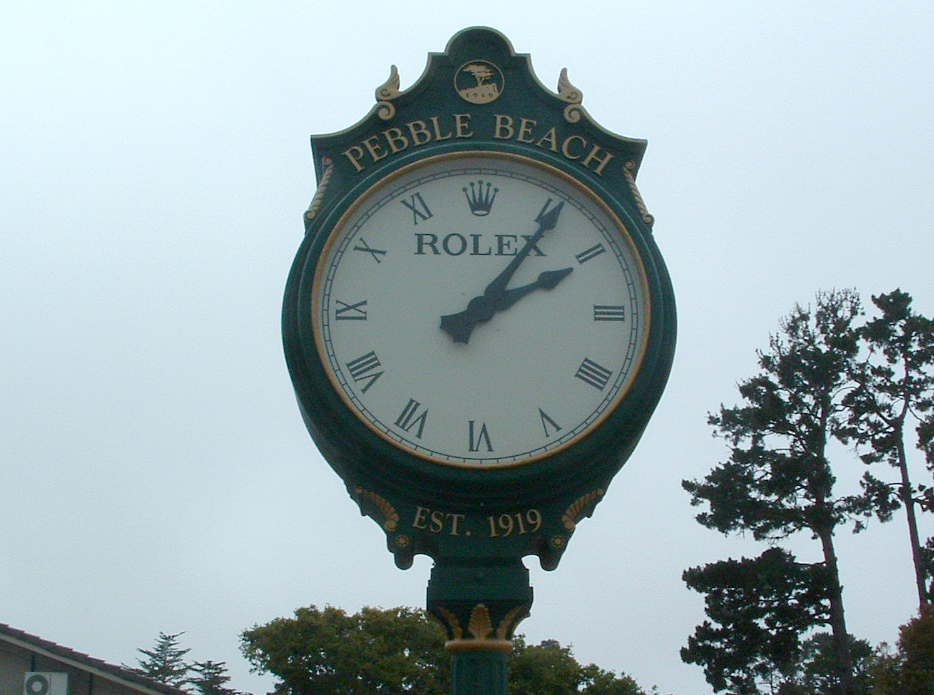
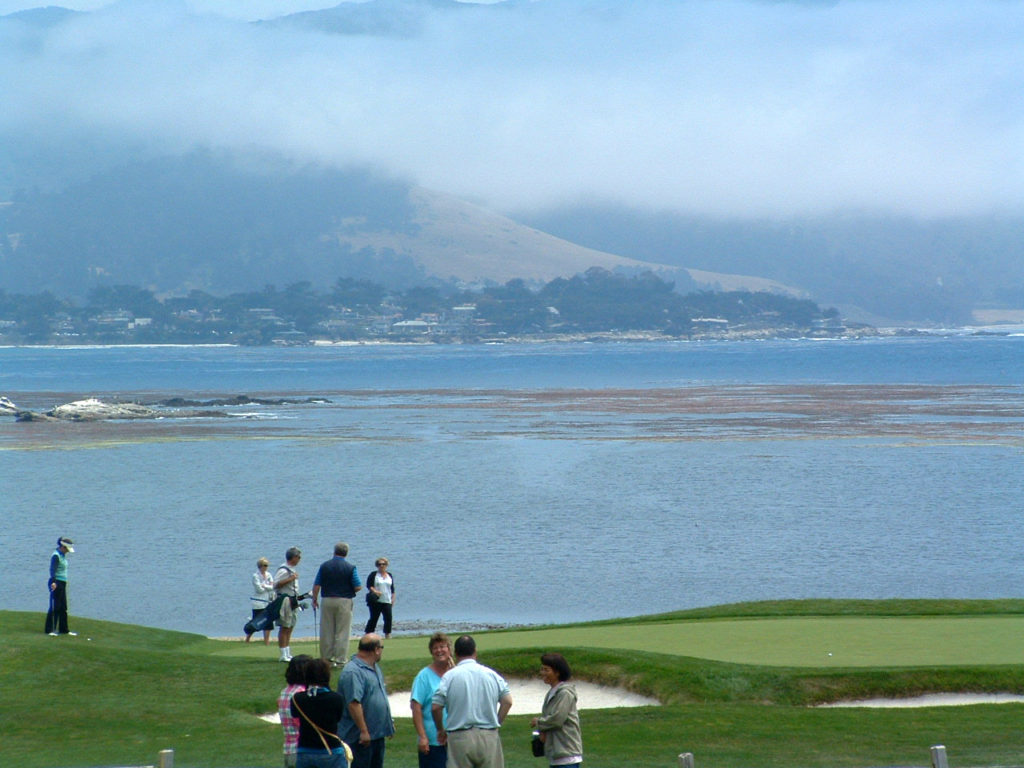
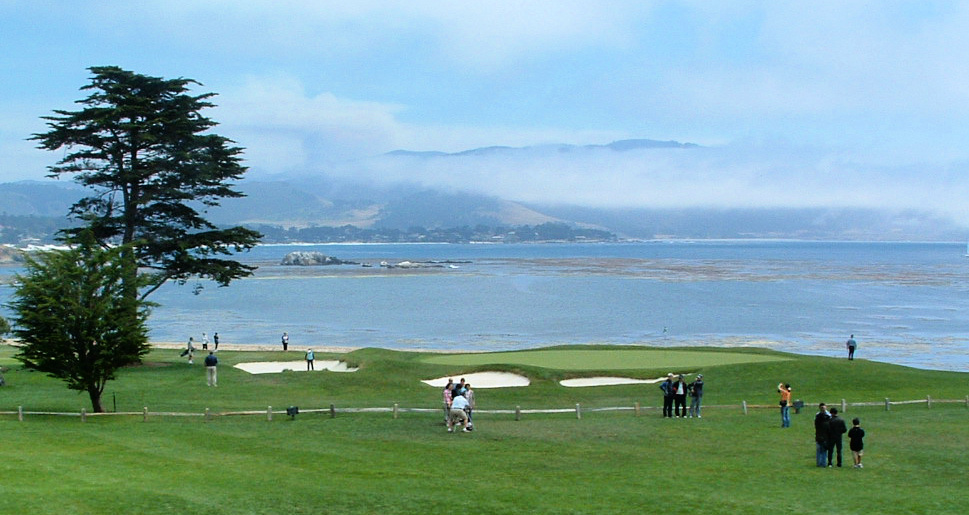
We then left the 17 Mile Drive and went on to Carmel where we visited Carmel Mission Basilica. The mission was founded in 1770 and was the second mission in California. It was originally a wooden structure, then an adobe one (parts of which still remain) and finally the stone church we see today. The stone is sandstone and comes from the nearby Santa Lucia Mountains. The stone church was completed in 1797. In 1931, major restoration began and continued for the next fifty years. It is considered on of the most authentically restored missions in California. The Carmel Mission was named a basilica in 1960 and visited by Pope John Paul II in 1987.
The first picture below is of the bell tower, the only mission in California that has its original bell tower. The bell you see in the picture below is one of the original bells and is named Ave Maria Purisima (translated the Pure Virgin Mary). The church itself is a functioning parish. We could spend very little time inside because a service was about to begin. I did take a picture of the main altar. Although you cannot see it in my picture, Junípero Serra, the founder of the mission, is buried in front of the altar.
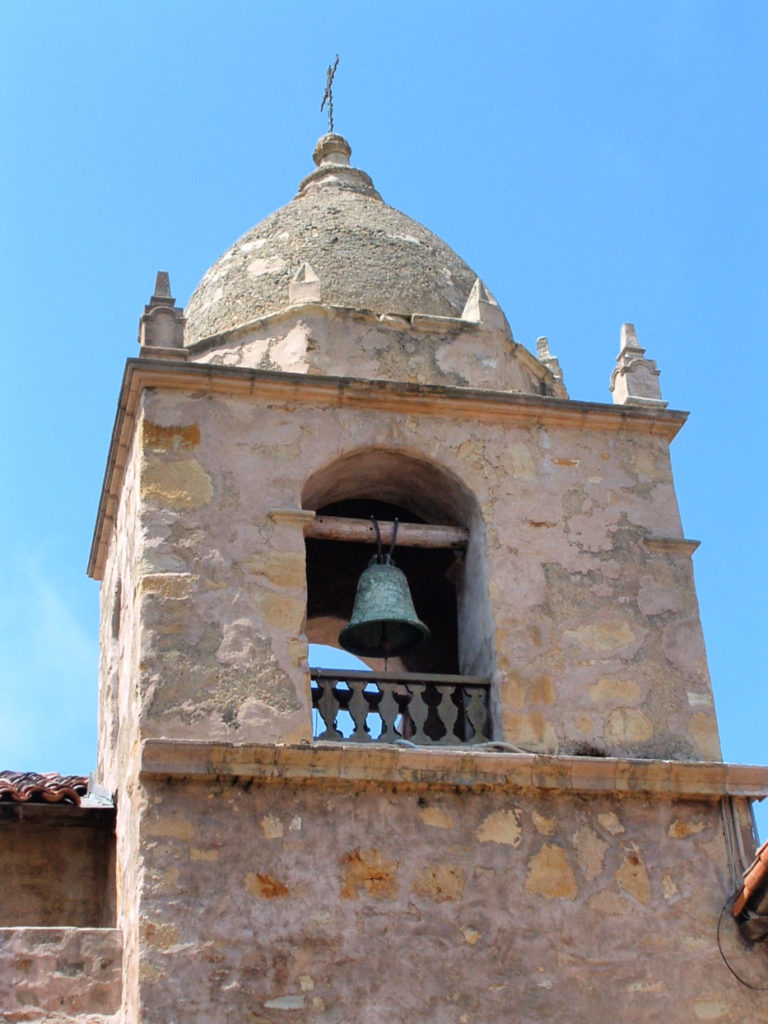
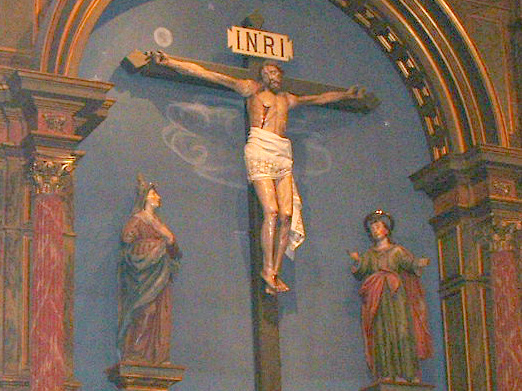
These are pictures taken in the courtyard. The statue pictured is of Junípero Serra. He was canonized in 2015, although there were those who supported and those who opposed his canonization based on his treatment of native Americans. It appears he genuinely wanted to covert native Americans to Christianity, but once converted, they were required to live at the mission and provide the manpower to raise crops and construct the mission. Some feel they were conscripted to do this work. Although many opposed his canonization, there are native Americans who support it and many remain in the Christian faith to this day.
The next picture is of Our Lady of Mt. Carmel. It is made of tiles and is framed by old stones from a doorway in the mission. The last two pictures are of the fountain in the courtyard area.
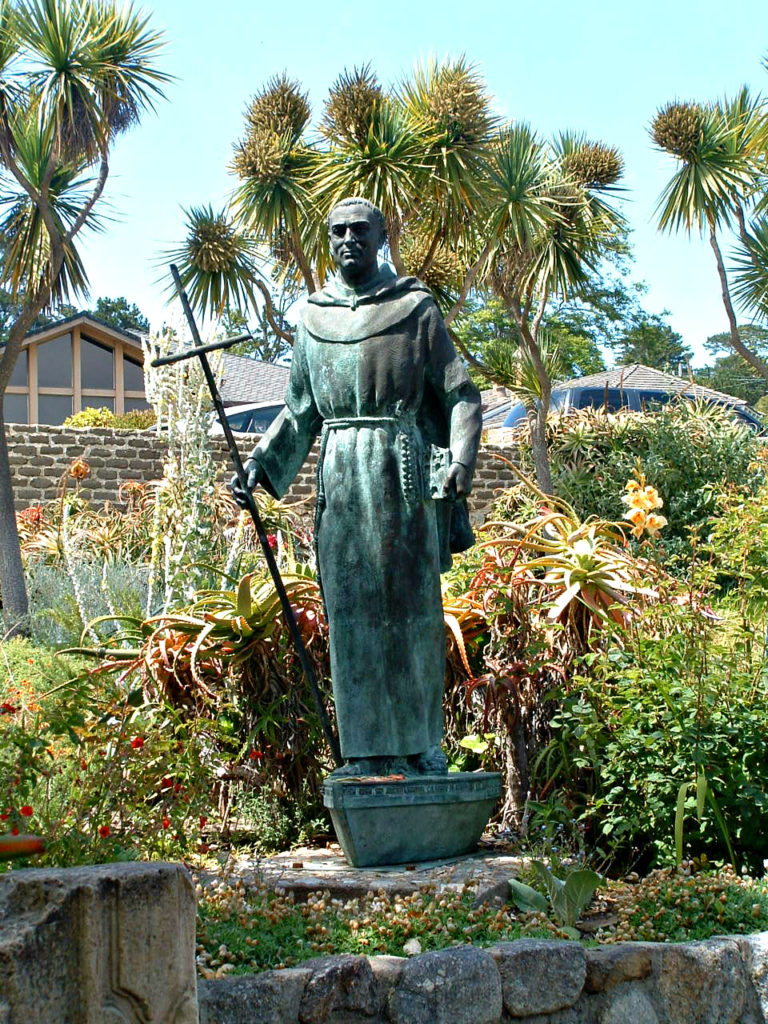
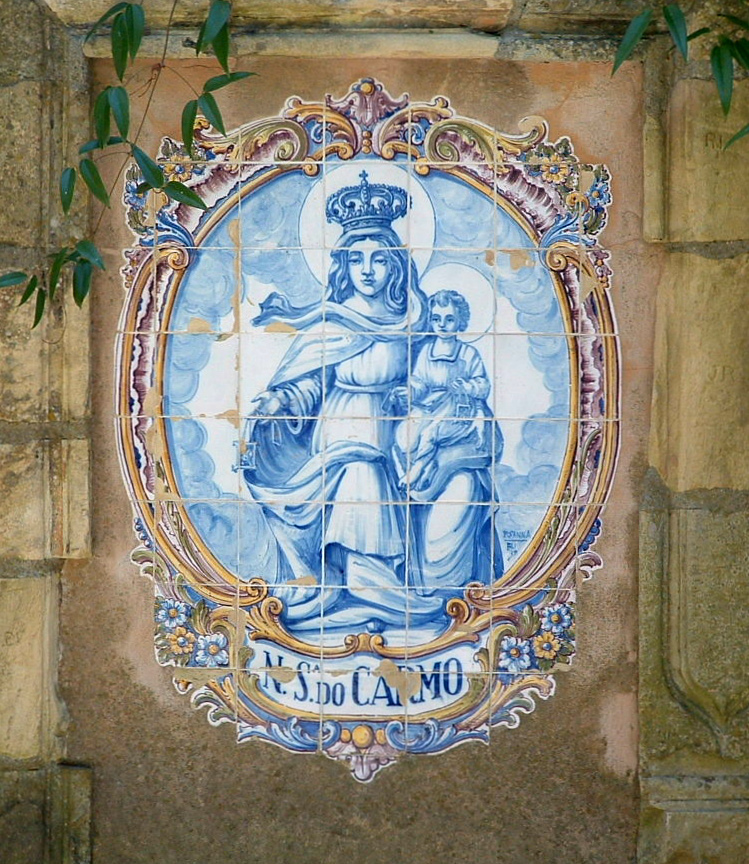
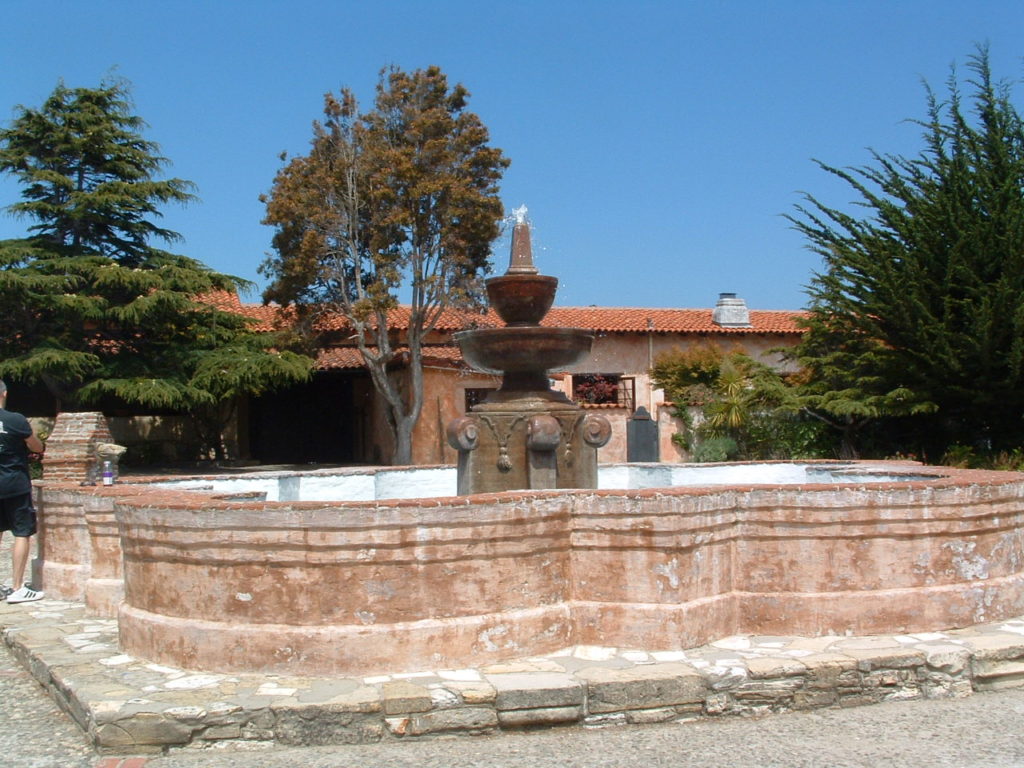
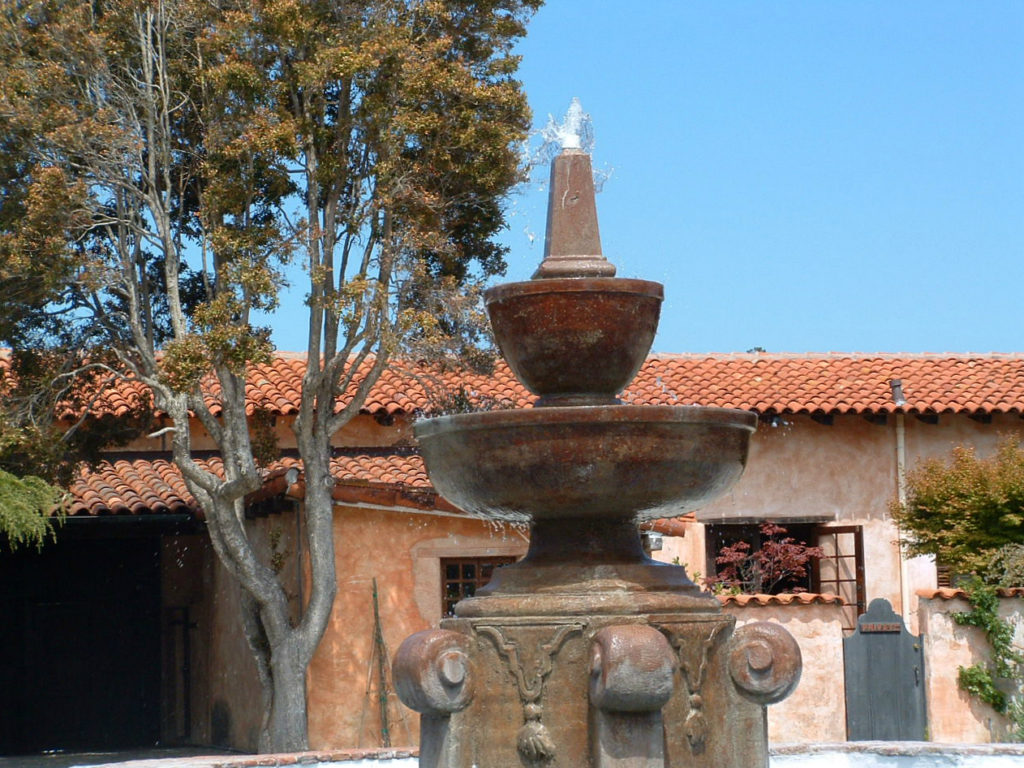
The last two pictures are of the cemetery at the mission. Shells ringed the graves. Many of those who were part of the mission community are buried here.

